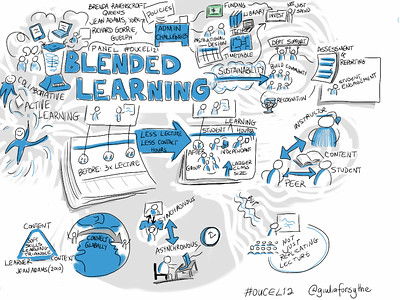
Sherry Fukuzawa, University of Toronto Mississauga, Toronto Canada
My post-COVID in-person lectures seem to have significantly less attendance than my pre-pandemic courses and I am wondering if this is a widespread trend? As I treaded through the cold snowy January morning to the first day of the Winter session I was not too surprised to see less than half of the students (primarily sitting in the back half of the room) waiting for my lecture. Truthfully, I almost envied the absentee students as I envisioned them still lying in their beds with a hot cup of coffee. I spent the remainder of the day inundated with students’ requests for lecture recordings and live streams of the course lectures to accommodate their course schedule conflicts and long commuting distances.
I am in a quandary whether this is a good outcome or not from online learning during the COVID pandemic. On one hand I acknowledge the benefits of allowing students flexibility in their time management and course schedules. However, I am also concerned about the reduced student participation and in-person group collaborations (both academically and socially). Courses designated as “in-person” on the course syllabus likely include learning outcomes and active learning components specifically designed for in-person group collaborations and hands-on labs. The “emergency remote learning (ERT)” implemented widely during the pandemic did not generally represent a thoughtful transition to an online teaching modality that prioritizes a learner-center pedagogy (Bozkurt & Sharma, 2020; Hodges et al., 2020). Many studies have shown negative effects of online learning during the pandemic including reduced student engagement (Mok et al., 2021). There is no question that the unique conditions of the pandemic (such as social isolation, stress, anxiety, uncertainty of the times, anxiety) contributed to these evaluations (Abdullah & Kauser, 2022).
The open question in my mind is what are the expectations for instructors? It takes a lot of work, time, and resources to create an effective and equivalent learning experience for online learners in synchronicity with in-person learners. I see even more challenges in a discipline such as anthropology where active learning and fieldwork are the primary pedagogy. However, perhaps it is time to accommodate students in this post-pandemic world. This inaugural TA blog in 2023 is full of questions rather than answers. I think this is probably fitting as we navigate teaching anthropology in this post-pandemic learning environment.
Abdullah, F., & Kauser, S. (2022). Students’ perspective on online learning during pandemic in higher education. Quality & Quantity, 1–13. https://doi.org/10.1007/s11135-022-01470-1
Bozkurt, A., & Sharma, R. C. (2020). Emergency remote teaching in a time of global crisis due to Corona Virus pandemic. Asian Journal of Distance Education,15(1),i–iv https://doi.org/10.1186/s41239-018-0130-1
Hodges, C., Moore, S., Lockee, B., Trust, T., & Bond, A. (2020). The difference between emergency remote teaching and online learning. Educause Review, March 27, 2020. https://er.educause.edu/articles/2020/3/the-difference-between-emergency-remote-teaching-and-online-learning
Mok, K., Xiong, W., & Rahman, H. (2021). COVID-19 pandemic’s disruption on university teaching and learning and competence cultivation: Student evaluation of online learning experiences in Hong Kong. International Journal of Chinese Education. January-April, 1-20.

Leave a Reply
You must be logged in to post a comment.